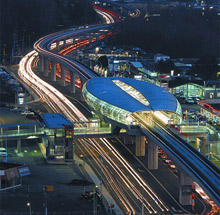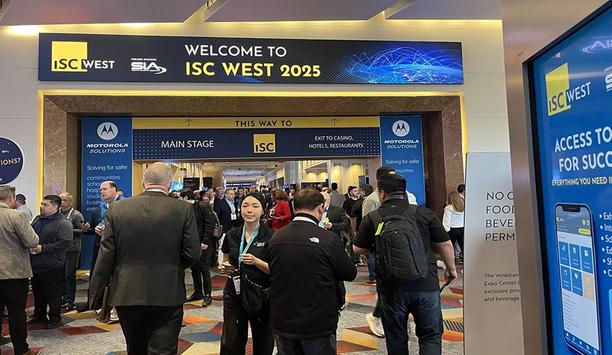 IndigoVision has won a prestigious contract for TransLink in Vancouver, Canada to upgrade the 880 camera CCTV system on SkyTrain, the world's largest automated light rapid transit system. SkyTrain transports 200,000 passengers a day along 49 km of elevated track through 33 stations located in and around Vancouver.
IndigoVision has won a prestigious contract for TransLink in Vancouver, Canada to upgrade the 880 camera CCTV system on SkyTrain, the world's largest automated light rapid transit system. SkyTrain transports 200,000 passengers a day along 49 km of elevated track through 33 stations located in and around Vancouver.
IndigoVision's IP Video technology will be used to upgrade the existing analogue matrix/VCR CCTV system and provide a scalable solution that will meet SkyTrain's video recording and future surveillance needs. The IP Video CCTV system has been designed by IndigoVision's local partner, Intercon Security Limited who will coordinate the installation in partnership with SkyTrain's own technical team.
Choosing the flexibility of an IP Video system enables SkyTrain to keep most of their original investment in the existing CCTV equipment, while creating a platform for future growth. All the original 880 cameras will be re-used together with the existing matrix switching hardware. At each of the 33 stations the cameras will be connected to IndigoVision's 8000 transmitter/receiver units. The 8000s convert the analogue camera signal to high-quality MPEG-4 digital video for transmission over the local IP network at each station. IndigoVision's standalone Networked Video Recorders (NVRs) will be installed in each station to provide advanced recording facilities for each camera stream.
"IndigoVision's solution will enable us to implement a hybrid CCTV system that will provide a replacement for the ageing VCR based recording system," said Iain Morton, Vice President, Intercon Security. "In the long-term however, the flexibility of IP Video will allow SkyTrain to benefit from the power of a fully networked system."
As there is currently very limited network capability between stations only analogue feeds will initially be transmitted from each station via an existing fibre link back to the SkyTrain Operations and Maintenance Center (OMC). This will be achieved by installing a further three 8000 receiver modules on the network at each station. These will convert three selected streams from the network to analogue for transmission to the OMC where they will be fed into the existing matrix and video wall configuration. The OMC will send PTZ data and switching information across the IP network to each station to control the cameras and select the three camera feeds for display.
When the network is upgraded in the future then the real potential of the IP Video system can be realised including the transmission of DVD-quality live and recorded digital video from all cameras in the system back to the OMC and the deployment of a true virtual matrix. Any operator with the necessary clearance will be able view video from any camera, live or recorded, at any point on the network, i.e. at the OMC or at any station. Real time analytics can be deployed to provide automatic display of camera feeds as events occur and additional cameras can be added to any point on the network without the addition of costly analogue video cabling.
















